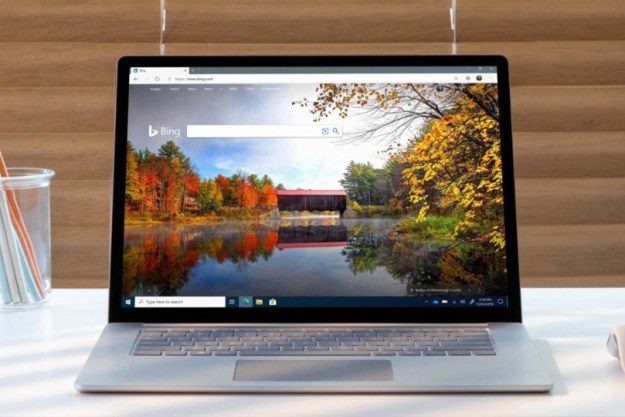I’ve always been a note-taker. From Post-Its to little twists of paper, I jot down reminders a dozen times a day. I know, it’s stupid: Digital Trends itself has a great post on the best productivity apps to get my lists in order, from simple systems like Remember the Milk and Google Tasks to robust life-organizers like Evernote. Technology can solve this problem for me. So I set out recently to get off the analog world of paper notes and into digital — and promptly ran into an immovable object: Microsoft.
Microsoft has mucked up to-do lists on a scale you simply can’t imagine, a failure that spans multiple products and teams, like a lil’ bit of salmonella that contaminates an entire factory’s output.
…like a lil’ bit of salmonella that contaminates an entire factory’s output
A year and half ago, the engineers rolled out a beta of Microsoft To-Do, the company’s replacement for the profoundly useful and popular Wunderlist app, which Microsoft bought back in 2015. Wunderlist is still pretty decent, even though Microsoft is very clear that it plans to suck the life out of it before burying it in an unmarked grave in Redmond. (To be fair, those are my words. In Microsoft’s, “Once we are confident that we have incorporated the best of Wunderlist into Microsoft To-Do, we will retire Wunderlist.” It reads better my way.)
So I signed up for Microsoft To-Do a month or two back, and replaced my Post-Its and scraps with tech. And it became clear pretty immediately the enormous gulch that still exists between Wunderlist and Microsoft To-Do. For starters, there’s the Cortana integration. Cortana is supposed to be Microsoft’s answer to Alexa and Siri, and To-Do lists are a key part of making that voice assistant functional. Tap the microphone next to the Cortana icon on your computer and say “Create a Holiday Planning list” and Cortana will make a new list for you … in Wunderlist. It’s the same functionality that has existed since the integration was rolled out in November of 2016, two years ago.

That’s right, Microsoft’s own signature voice-recognition technology doesn’t recognize Microsoft’s own To-Do app, despite the company’s publicly announced plans to port over the best of Wunderlist. Is the company working to change that? Are the Cortana team and the To-Do team talking to each other? We asked Microsoft this question a week ago. The company declined to go on the record for this story.
Ugh.
Change is coming, thanks to announcements made at an early October event (where Microsoft unveiled the fantastic Surface Pro 6). Unfortunately, those changes are profoundly stupid.
First, Microsoft announced integration with Outlook – a concept that could turn To-Do into something amazing. Outlook is pervasive, like Dunkin Donuts or something. According to Jee Soo Han, a product marketing manager for Microsoft: “While in your inbox, open the tasks pane and drag and drop emails to it on the right-hand side to create a task. This task will sync to Microsoft To-Do with the associated email linked for reference. Now you don’t have to leave Outlook to create a task manually, and you’ll have the email to reference right in the task notes!”
Unfortunately, changes Microsoft plans are profoundly stupid
Great! Except it will only work in Outlook.com when the feature is finally released next month, and for other web versions of Outlook in December. Meanwhile, the same functionality exists today for the vast majority of consumers using the Outlook app on our desktop….. through Wunderlist, of course.
Digital Trends asked Microsoft when this basic functionality would be brought to the To-Do app. The company declined to respond.
Then there’s Microsoft Launcher version 5.0, unveiled at the same event and promising a deep connection between your Android smartphone and your Windows laptop or desktop. One key feature: Microsoft To-Do is built directly into the app. Great! Easy access to my list? I love it. Guess which program Microsoft decided to sync with it? You get a gold star if you guessed Wunderlist.

Launcher 5.0 is especially maddening because it looks virtually identical to the To-Do app itself, yet doesn’t connect with it in anyway. Install ‘em both and you’ll have two different versions of Microsoft To-Do running on the same phone that are unable to talk to each other. In the only meaningful comment Microsoft was willing to make for this article, the company acknowledged this issue: “The to-do list feature in Microsoft Launcher you see currently does not yet integrate with Microsoft To-Do. We are actively working on delivering Microsoft To-Do integration into Microsoft Launcher. We’ll have more to share when we’re ready.”
Don’t hold your breath.
Meanwhile, what about One Note? Does that integrate with To-Do? What about Windows itself? Or the other Office applications, like Word? What about Edge? I’ll let you guess. Microsoft, if you’re listening, tackle these simple asks! It helps you to get it done, build yourself a To-Do list – just take the hint. Do it in Wunderlist, m’kay?
Editors' Recommendations
- How Intel and Microsoft are teaming up to take on Apple
- 7 beloved Windows apps that Microsoft has killed over the years
- Microsoft has a new way to keep ChatGPT ethical, but will it work?
- Signs point to Microsoft finally giving up on the Surface Connect port
- Microsoft’s Bing Chat waitlist is gone — how to sign up now


